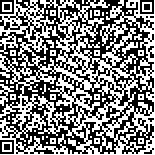| 摘要: |
| [摘要] 目的 分析Ilizarov胫骨横向骨搬移技术联合介入方法治疗糖尿病足严重下肢动脉血管病变的临床疗效。方法 选择2015-09~2019-01漯河医学高等专科学校第二附属医院收治的糖尿病足溃疡患者21例。应用Ilizarov胫骨横向骨搬移技术联合介入方法进行治疗。记录患者创面愈合时间,术前及术后6个月踝肱指数、下肢血管直径及血流速度,评估临床疗效。结果 术后2周,患者的溃疡面均开始缩小,术后4周时均达到植皮或皮瓣移植术条件,所有创面未做特殊处理。所有患者溃疡面愈合,创面愈合时间(57.76±12.3)d。术后2个月超声复查结果显示患肢外周新生血管网丰富,患肢功能达到日常生活需要。术后6个月时,多普勒血流探测仪检测到患足踝肱指数增大,血管超声检测到患足胫前及胫骨后动脉血流速度加快,血管内径增大,与术前比较差异均有统计学意义(P<0.05)。1例因严重并发症死亡。结论 对于下肢膝关节以上大动脉严重狭窄甚至闭塞的糖尿病足患者,可先采用介入方法打通大血管,再用Ilizarov胫骨横向骨搬移技术改善微循环,加快创面修复,降低小截肢及大截肢发生率。 |
| 关键词: Ilizarov技术 胫骨横向骨搬移 糖尿病足 |
| DOI:10.3969/j.issn.1674-3806.2020.11.08 |
| 分类号:R 605 |
| 基金项目:河南省科技计划项目(编号:182102310148);漯河医专科技计划项目(编号:2019-LYZKYYB015) |
|
| Analysis of the treatment of severe lower limb arterial vascular lesions of diabetic foot with Ilizarov transverse tibial bone transport technique combined with interventional methods |
|
LI Zhen, LING Jian-sheng, WANG Peng-ru, et al.
|
|
The Eighth Department of Orthopaedics, the Second Affiliated Hospital of Luohe Medical College, Henan 462300, China
|
| Abstract: |
| [Abstract] Objective To analyze the clinical efficacy of Ilizarov transverse tibial bone transport technique combined with interventional methods in treatment of severe lower limb arterial vascular lesions of diabetic foot. Methods Twenty-one patients with diabetic foot ulcers admitted to the Second Affiliated Hospital of Luohe Medical College from September 2015 to January 2019 were selected and were treated with Ilizarov transverse tibial bone transport technique combined with interventional methods. The wound healing time, ankle-brachial index, lower limb blood vessel diameter and blood flow velocity before and 6 months after the operation were recorded to evaluate the clinical efficacy. Results Two weeks after the operation, the ulcer surfaces of the patients began to shrink, and 4 weeks after the operation, the skin graft or flap transplantation conditions reached. No special treatment was performed on all the wounds. The ulcer surfaces of all the patients healed, and the wound healing time was (57.76±12.3)days. Two months after the operation, the results of ultrasound reexamination showed that the peripheral neovascular nets of the affected limbs were abundant, and the function of the affected limbs met the needs of daily life. Six weeks after the operation, Doppler blood flow detector found an increase in the ankle-brachial index of the affected feet; vascular ultrasound found increased blood flow in the anterior and posterior tibial arteries of the affected feet, and the inner diameter of the blood vessels increased; there were statistically significant differences between the postoperative results and the preoperative results(P<0.05). One case died of severe complications. Conclusion For diabetic foot patients with severe stenosis or even occlusion of the large arteries above the knee joint of the lower extremities, interventional methods can be used to recanaliza the large blood vessels, and then Ilizarov transverse tibial bone transport technique is used to improve microcirculation, speed up wound repair, and reduce the incidence of small and large amputations. |
| Key words: Ilizarov technology Transverse tibial bone transport Diabetic foot |

